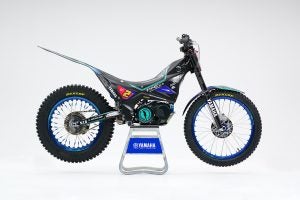You may have seen updates to the European helmet safety standards. We’re here to help make helmet certification alphabet soup a little clearer.
Different Countries, Different Standards
You will note that helmets sold in Europe are subject to stringent helmet standards, and must submit their helmets to a third party for testing. And not just one helmet – ECE demands up to 50 samples, depending on how many shell sizes the company sells. Arai, for example, produces several shell sizes, and must test each of those sizes against ECE standards. Snell, SHARP and FIM are voluntary tests for street helmets, though a FIM FRHPhe-02 rating will be required for FIM-sanctioned events. That’s an expensive process.
ECE 22.06 was updated mid-2020. FIM FRHPhe-02 will be in effect come 2026. Snell is updating their standard to be in effect by April of 2024.
DOT LOL
Helmets sold in the US are not subject to federal safety standards. All helmet laws are state-by state, and some states do require the use of a DOT-approved helmet. Manufacturers test against DOT standards at their whim. There is no third party certification. Helmets comply by the DOT standard through trust alone. The DOT standard also does not include any testing of the face shield. The US DOT will occasionally acquire helmets for testing, but has no real way to take “novelty” helmets off the market.
Snell Updates
Snell standards, again, come in two different flavors. M2025D is what you will see on helmets in North America and Japan. Snell will put the other, M2025R, onto helmets in the rest of the world, since it meets ECE R 22-06 standards as well. The only difference between the two is the peak acceleration rating (M2025R: 257g/275g M2025D 243g/275g).
Helmet manufacture is a closely guarded trade secret, but we can probably say the difference between helmets with the two ratings comes down to internal padding and hard foam construction. Since Snell’s last update from the M2020D and M2020R ratings, they have added a new oblique impact test. This points the helmet straight down (face first) to measure impact on the inner head form.
We Love Charts
There is a spectacular chart over at Ultimate Motorcycling which details all of the most-updated standards and what they test for, about ¾ of the way down the page. It details exactly what the tests do, and what the limits are, so you can see for yourself what each of the standards really means. It’s especially helpful to folks ordering helmets across borders.
When we’re shopping for helmets, we want to make sure they’re worth wearing, so keeping up on what the standards mean is a good idea.







